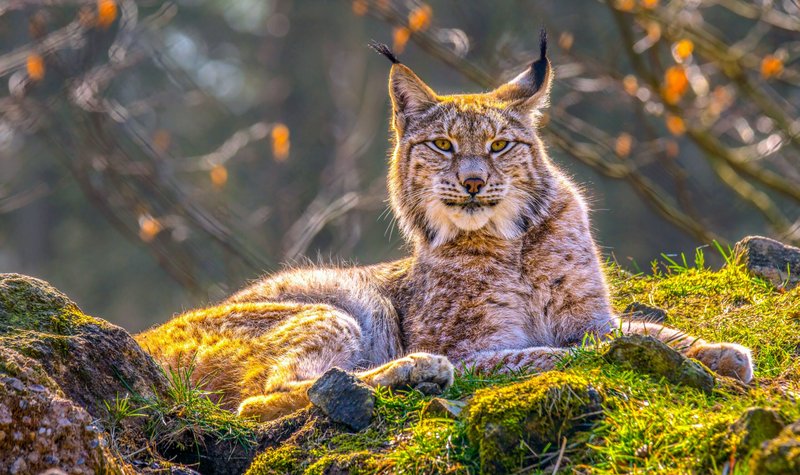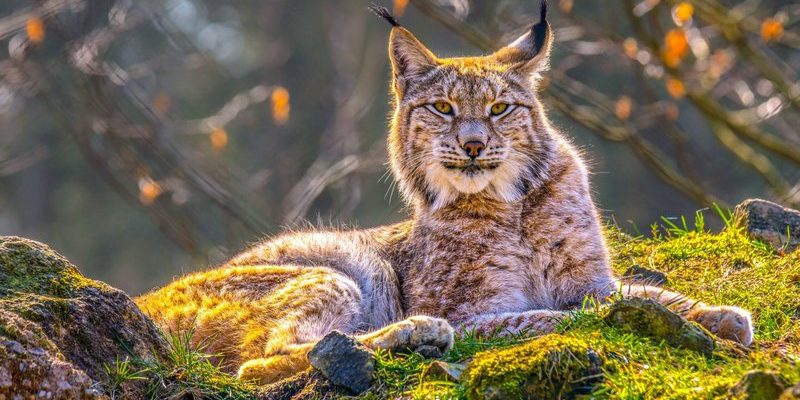
Understanding the living spaces of lynxes isn’t just about geography. It’s like peeling back the layers of an onion, revealing how these animals adapt to various climates and ecosystems. From the dense woods of North America to the icy tundras of Europe and Asia, lynxes are truly a species of varied landscapes. This article will unpack their home ranges, showcasing the intricacies of their habitats and what they need to thrive.
Types of Lynxes
Before we get into where lynxes live, let’s clarify which types we’re talking about. There are four main species of lynx: the Eurasian lynx, the Canada lynx, the Iberian lynx, and the bobcat. Each of these species has different habitat preferences and distributions.
Eurasian Lynx: As the largest of the lynx species, the Eurasian lynx roams across Europe and Asia. This cat enjoys forests, particularly boreal and temperate woodlands. You might find them in mountainous areas, where thick underbrush offers shelter and hunting grounds.
Canada Lynx: Known for its fluffy paws, which act like snowshoes, the Canada lynx prefers snowy habitats in North America. Its range stretches across Canada and parts of Alaska, often favoring dense coniferous forests.
Iberian Lynx: This lynx is the most endangered of the bunch. It lives primarily in Spain and Portugal, favoring scrubland and open forests. Its habitat is threatened by habitat loss, but conservation efforts are helping to stabilize its population.
Bobcat: The bobcat is widely distributed across North America. It thrives in various environments, from forests to deserts. This adaptability allows it to exist in many distinct landscapes, showcasing its flexibility.
Preferred Habitats of Lynxes
Lynxes are picky about where they settle down. Each species has a set of preferences that help them thrive. Here’s an overview of their favorite habitats.
Forests: Most lynxes, especially the Eurasian and Canada lynx, love forested areas. Dense trees give them shelter and a place to stalk prey. Think of it as their cozy living room, where they can curl up to rest during the day.
Mountains: Lynxes often prefer mountainous terrains. Here, they can navigate rocky outcrops and enjoy cooler climates. The elevation provides a vantage point for spotting potential prey. Isn’t it amazing how these cats adapt to such challenging terrains?
Wetlands and Scrublands: The Iberian lynx, unlike its forest-dwelling cousins, enjoys scrublands. These areas provide vital cover and hunting opportunities, especially for their primary prey: rabbits. Their specific habitat requirements make conservation even more crucial for their survival.
Distribution Across the Globe
Lynxes inhabit multiple regions, but their distribution varies significantly by species. Let’s break down where you can find them.
Eurasian Lynx Distribution: The Eurasian lynx has one of the widest ranges. You can find it across many countries in Europe and into Asia, stretching from Scandinavia down to the Carpathians and over to the Russian Far East. They often inhabit mountain ranges, where food is plentiful.
Canada Lynx Distribution: In Canada and Alaska, the Canada lynx has a stronghold. Its range doesn’t extend very far south, typically stopping in the northern United States. Its love for cold climates is evident in its limited distribution, preferring areas with deep snow.
Iberian Lynx Distribution: This species is restricted to the Iberian Peninsula. Once widespread, the Iberian lynx has been pushed back to fragmented areas due to habitat destruction. Conservation efforts are focused on re-establishing their presence in more areas, but they remain one of the rarest wild cats.
Bobcat Distribution: Bobcats are widespread and can be found in various habitats across the continental United States. From urban outskirts to dense forests, their adaptability allows them to thrive in both wild and suburban areas. It’s one reason they’re the most common lynx species in North America.
Environmental Adaptations
Lynxes are more than just beautiful animals; they are marvelously adapted to their environments. Let’s explore how they make these diverse habitats work for them.
Snow Adaptations: Both the Canada lynx and the Eurasian lynx have developed traits that help them navigate snowy landscapes. Their large, furry paws act as natural snowshoes, allowing them to walk easily on soft snow. Imagine trying to walk through a field of fluff—those paws make all the difference!
Hunting Strategies: Their habitats dictate their hunting strategies. Lynxes rely on stealth and patience, often sitting silently in wait for prey. Their keen eyesight comes in handy, especially in low-light environments like dense forests. This way, they can catch rabbits, birds, and small rodents without much effort.
Camouflage: Lynxes have stunning fur patterns that help them blend into their surroundings. The spotted coats of Eurasian and bobcats provide excellent camouflage in wooded areas, enabling them to stalk prey more effectively. It’s like wearing an outfit that perfectly matches your home decor!
Impact of Climate Change on Lynx Habitats
As we think about where lynxes live, it’s critical to consider how climate change affects these majestic animals and their habitats. The warming climate poses significant threats.
Habitat Loss: Many lynx habitats are vulnerable to shifts in temperature. As forests change, so do the populations of prey. If their food sources dwindle, lynxes may struggle to survive. The delicate balance of their ecosystems can be easily disrupted.
Changing Weather Patterns: For species like the Canada lynx, deeper snows are essential for their hunting techniques. If winter conditions change, it could impact their ability to find food. Imagine if your favorite hunting ground became harder to navigate overnight; it affects their survival.
Conservation Efforts: Thankfully, many groups are working to protect lynx habitats. By establishing protected areas, enforcing wildlife laws, and raising awareness, conservationists aim to ensure that lynxes can continue to thrive despite these challenges. It’s a collective effort that reminds us of our connection to nature.
Conservation Challenges and Efforts
While lynxes are equipped to survive in their habitats, they face numerous conservation challenges. Let’s shine a light on some of these issues.
Habitat Fragmentation: Urbanization and agriculture lead to fragmented habitats. This can isolate lynx populations, making it difficult for them to find mates and hunt effectively. Imagine living in a neighborhood where all the streets are blocked off—it’s limiting!
Prey Availability: Changes to prey populations, such as rabbits, can have a ripple effect. If their primary food sources decrease due to environmental changes or overhunting, it directly impacts lynx survival.
Conservation Strategies: Because of these challenges, numerous organizations focus on preserving lynx habitats. From creating wildlife corridors to monitoring lynx populations, these efforts play a critical role in ensuring future generations can enjoy these magnificent animals.
In conclusion, the world of lynxes is as complex as it is captivating. From their habitats in snowy forests to the scrublands of Spain, each species has unique needs and preferences. As we continue to learn about where lynxes live, let’s remember the importance of protecting their habitats. By doing so, we’re not only ensuring their survival but also the health of the ecosystems they inhabit. So, the next time you hear a rustle in the woods, you might just be imagining a lynx on the prowl!

